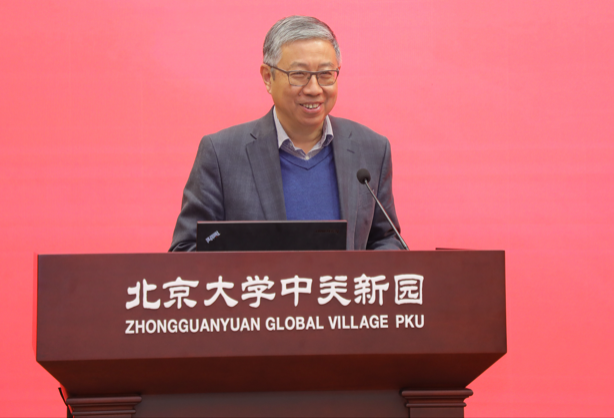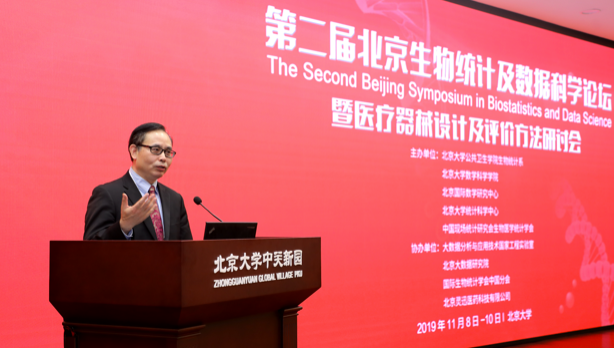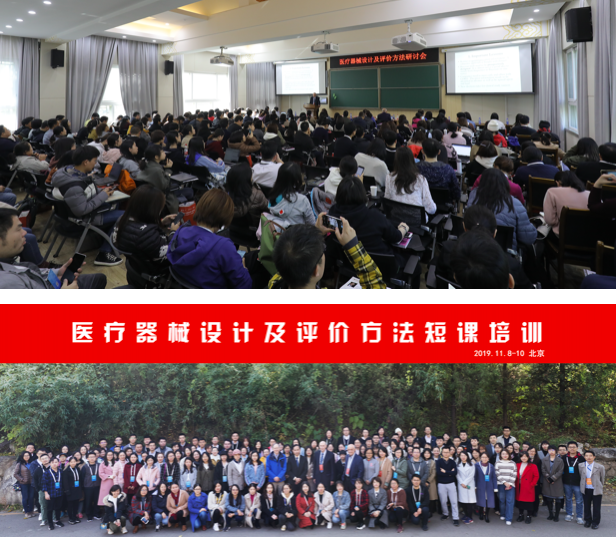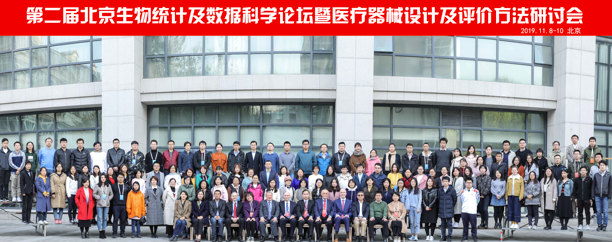The Second Beijing Symposium in Biostatistics and Data Science held at PKU
Nov 18, 2019
Peking University, Nov. 12, 2019: From November 8th to 10th, the Second Beijing Symposium in Biostatistics and Data Science was held at Peking University. Themed “Design and Evaluation Methods of Medical Devices”, this symposium combined the latest research progress in biostatistics and data science to conduct in-depth discussions from various perspectives.
The symposium was co-hosted by the Department of Biostatistics of Peking University School of Public Health, the School of Mathematical Sciences of Peking University, the Beijing International Center for Mathematical Research, the Center for Statistical Science of Peking University, the Society for Biomedical Statistics of Chinese Association for Applied Statistics, the International Biometric Society of China and the Beijing Linkermed Tech Co., Ltd.
More than 300 experts and scholars from government regulatory authorities, academics and business circles attended the event. Tian Gang, vice president of Peking University, director of Beijing International Center for Mathematical Research and Academician of the Chinese Academy of Sciences, Xiao Yuan, deputy director of Peking University Health Science Center, and Zhou Xiaohua, chair of Department of Biostatistics, PKU School of Public Health and Boya chair professor of Peking University, delivered speeches at the opening ceremony.
Tian Gang delivering the speech
Zhou Xiaohua delivering the speech
This symposium includes two sessions: short training and meeting. The short training themed “The Clinical Trial and Evaluation for Medical Devices” was given by Prof. Zhou Xiaohua and Dr. Gregory Campbell, former director of Department of Biostatistics at U.S. Food and Drug Administration (FDA). They mainly introduced the major design considerations and statistical analysis models of diagnostic and therapeutic medical devices.
During the meeting, experts and scholars from different administrative departments, academic institutions and hospitals shared latest developments and application of the studies of statistical methods for medical devices, and discussed about future development and prospects of medical devices under the background of big data.
On-site training and group photo
Medical devices can be divided into four categories: high-value consumables, low-value consumables, medical equipment, and in vitro diagnostics. Medical device innovation is an important part of the national science and technology innovation system. And it is also the core driving force for implementing the “Healthy China” initiative. Advanced medical equipment is an important symbol of a country’s scientific and technological progress and national health protection capabilities. The China Society for Drug Regulation and the Social Science Academic Press jointly released the Blue Book of Medical Device Industry: Annual Report on the Development of Medical Device Industry in China (2019) on October 21. According to the report, although China’s medical device market is currently characterized by large number and small production of companies as well as few high-tech involved, and that the industry’s R&D investment is significantly lower than that of foreign countries, the industry’s development is still optimistic. In the future, China will become the world’s largest medical device market, and the industry will continue to maintain a good momentum of rapid and healthy development. It is expected that the next decade will be the golden age of China’s medical device industry.
Group photo
The symposium focused on the process, policy, evaluation principles, risk control and internationalization strategies for the approval of medical devices and discussed how to promote the application of biometric methods and data science in clinical trials and evaluation of medical devices. It not only arranged a short training, but also introduced application examples of international frontiers; half of the 20 plus speakers were from abroad, including top experts in statistics, decision makers of government regulatory agencies, and research staffs from the frontline of R&D institutions and hospitals. The content of the report covered the entire process from design to clinical trial to use. The convening of the symposium was of great significance to promote the application of biostatistics and data science theories in the field of medical device clinical research, the strategic thinking of China’s medical device evaluation and the formation of key technology systems, and the clinical trial of innovative medical devices in China and was highly praised by all the participants.
Written by: Li Yangyang
Edited by: Huang Yadan
Source: PKU News (Chinese)



